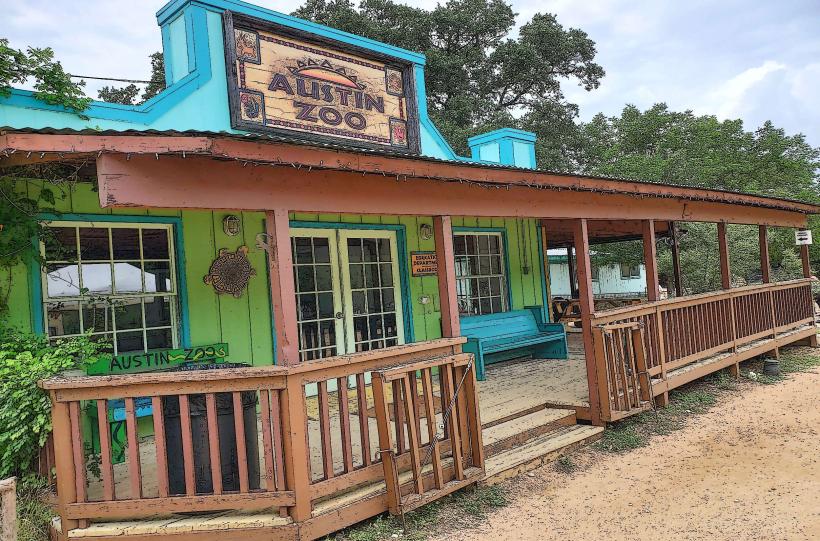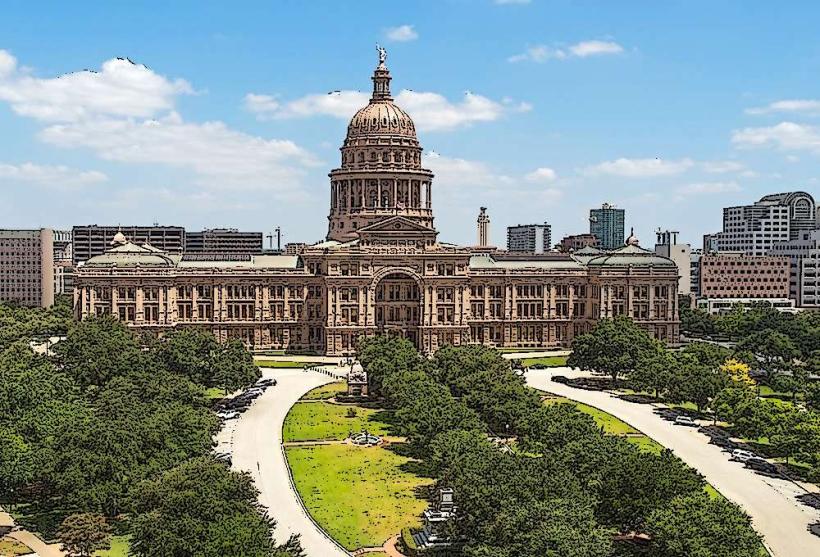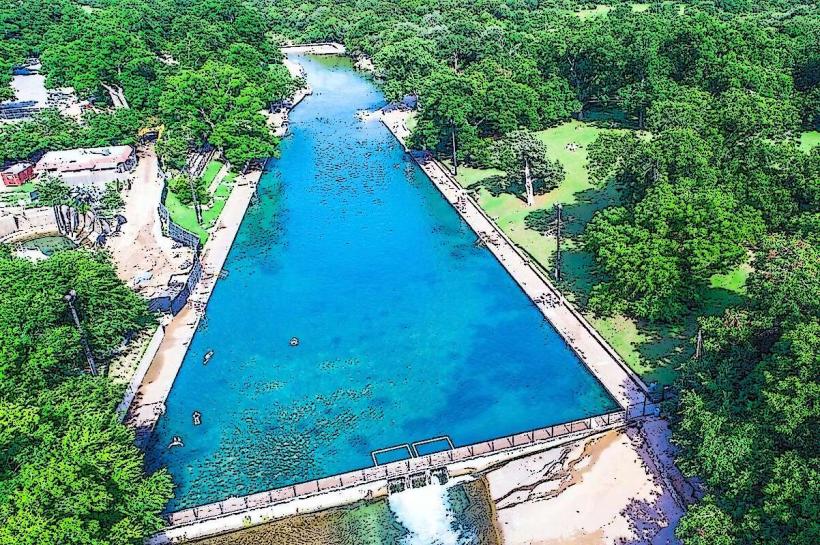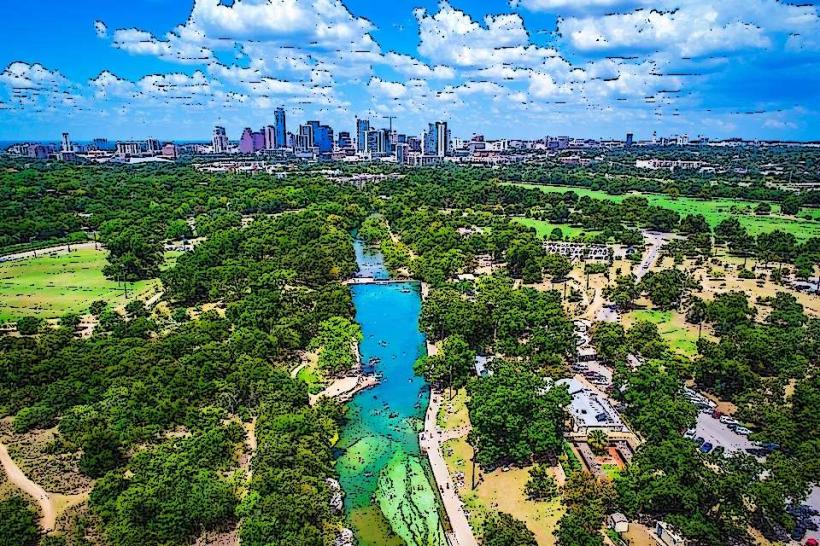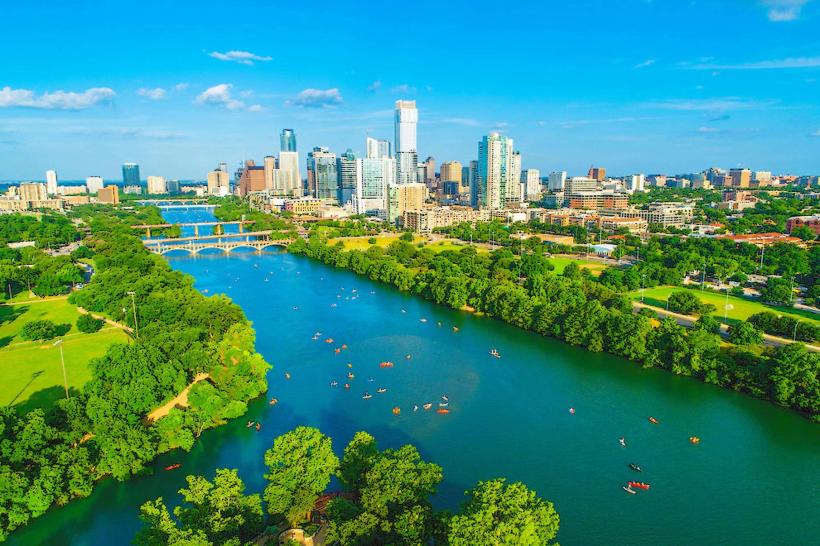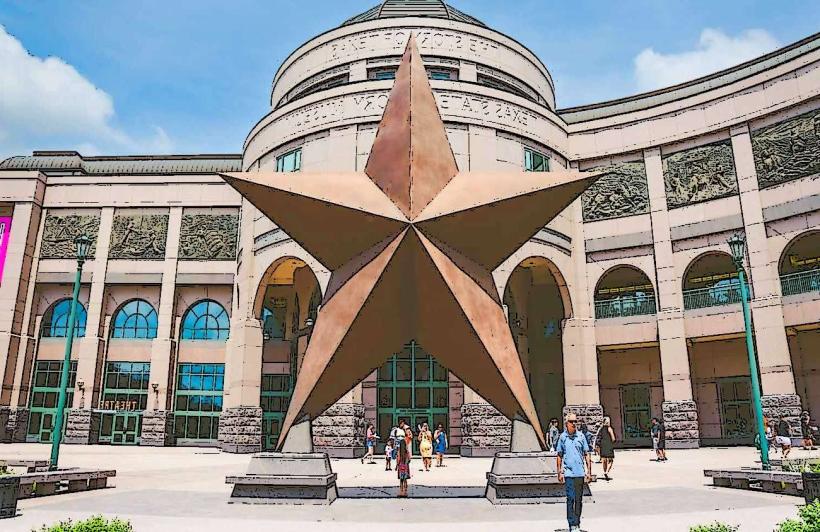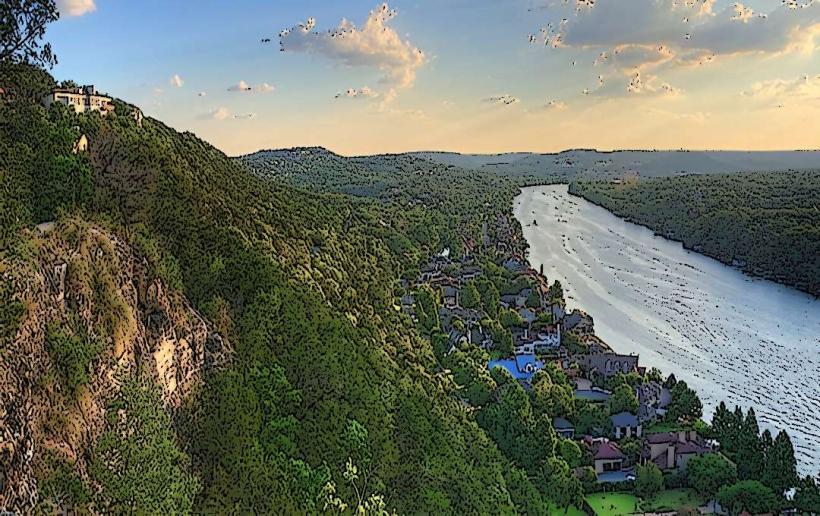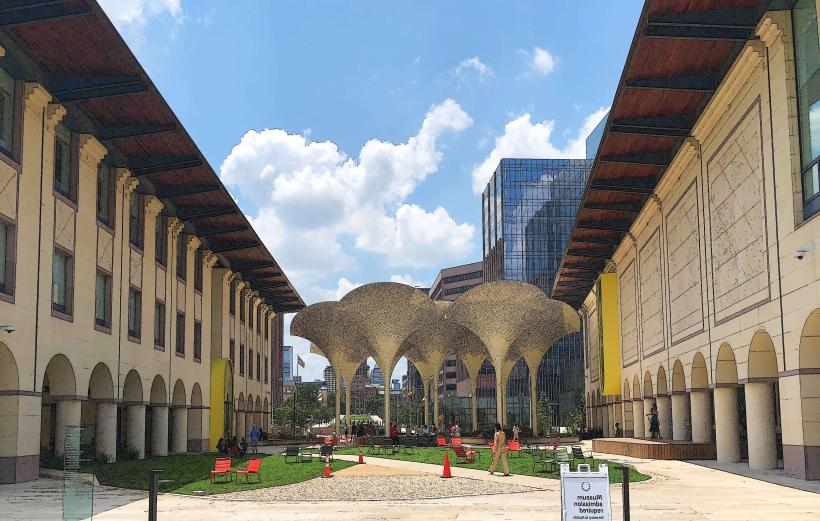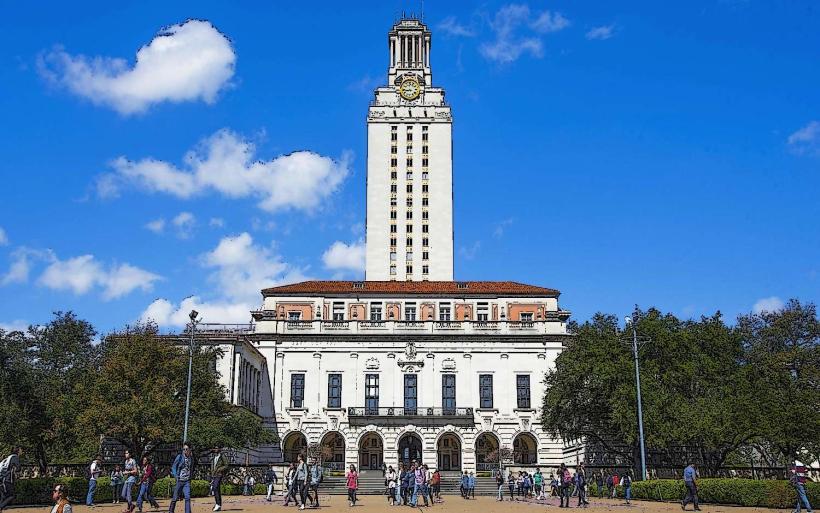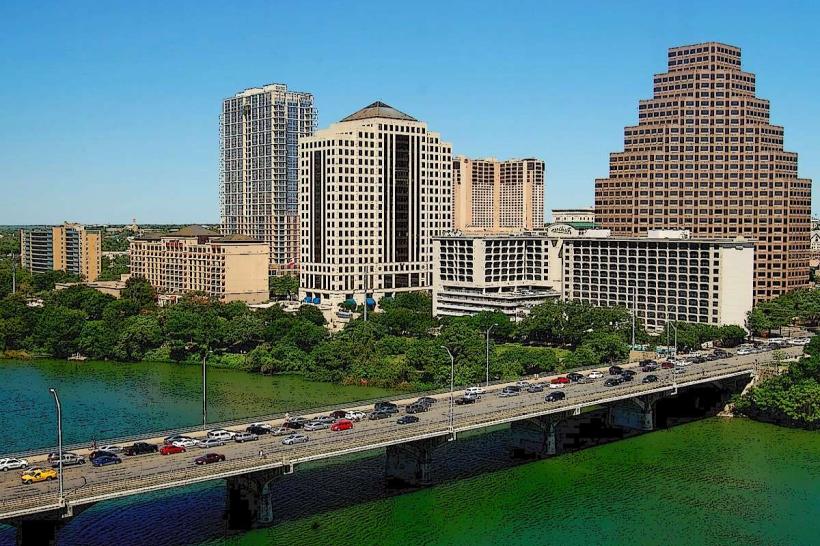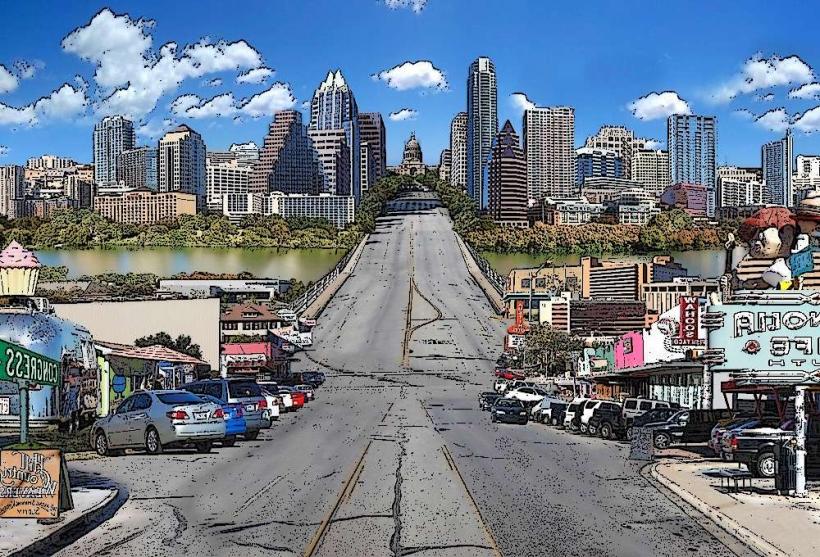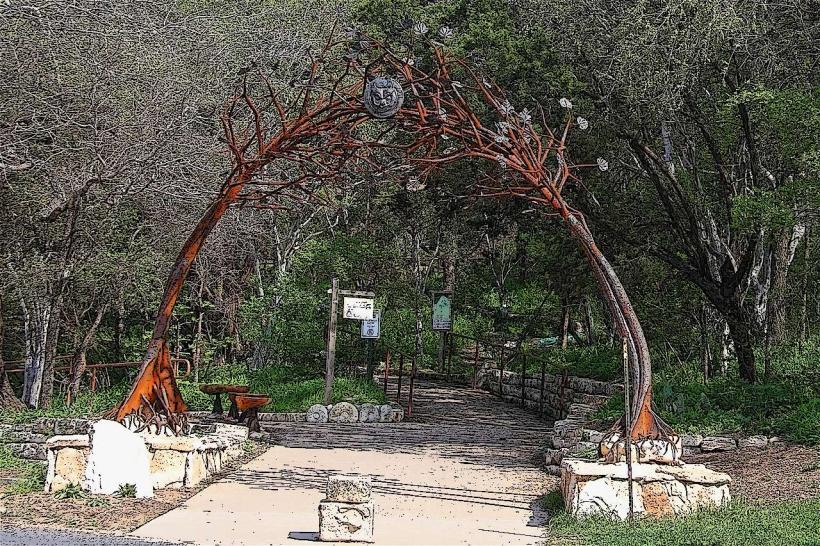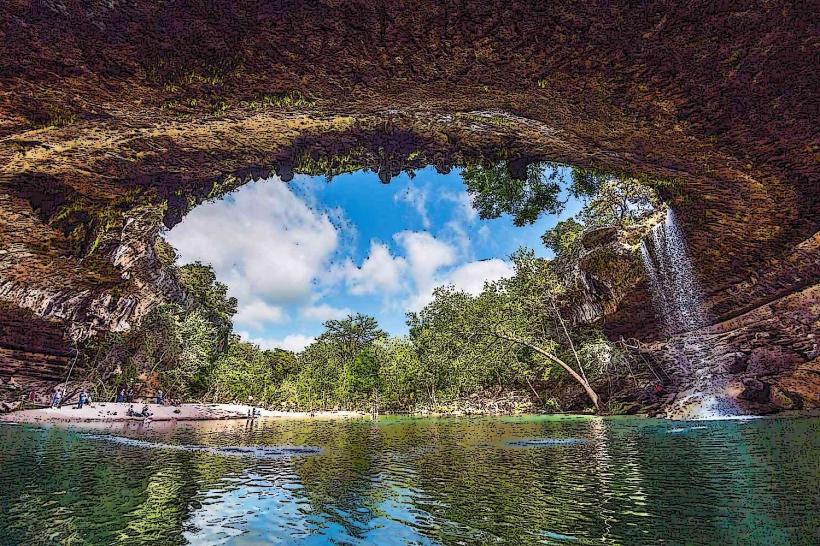Information
Landmark: Barton Creek GreenbeltCity: Austin
Country: USA Texas
Continent: North America
Barton Creek Greenbelt, Austin, USA Texas, North America
Barton Creek Greenbelt – In-Depth Overview
The Barton Creek Greenbelt is one of the most prized natural spaces in Austin, Texas. Renowned for its scenic beauty, ecological diversity, and recreational offerings, it is a favorite destination for both locals and tourists. Stretching roughly 7.25 miles, the Greenbelt weaves through steep limestone canyons, wooded trails, and lush creek beds, creating a peaceful and rugged environment just minutes from downtown Austin.
Origins and Geography
The Greenbelt follows Barton Creek, a spring-fed tributary that ultimately flows into the Colorado River near Lady Bird Lake. The Greenbelt is part of the Edwards Plateau ecosystem and is characterized by rugged terrain, dense woodland, exposed limestone cliffs, and intermittent waterfalls and swimming holes. It begins near Zilker Park and extends southwest toward the Lost Creek neighborhood, with multiple access points along its length.
Ecological Importance
This green corridor supports a diverse array of flora and fauna:
Vegetation: Ashe juniper, live oak, sycamore, cedar elm, and Mexican buckeye dominate the tree canopy. There are also native grasses, succulents, and wildflowers such as bluebonnets and firewheels.
Wildlife: The area is home to white-tailed deer, armadillos, foxes, and hundreds of bird species, including the Golden-cheeked Warbler, which is federally listed as endangered. Reptiles like Texas rat snakes and coral snakes also inhabit the region.
Aquatic Life: Barton Creek supports aquatic species like minnows, sunfish, crayfish, and the rare Barton Springs Salamander, found only in this region.
The Greenbelt plays a crucial role in flood mitigation, urban cooling, and water filtration, making it a valuable environmental resource for Austin.
Key Access Points and Trailheads
There are several major entrances, each with unique features and access to different parts of the creek:
Zilker Park Trailhead (Barton Springs Road)
Closest to downtown Austin
Popular for easy access and proximity to Barton Springs Pool
Features wide trails and a starting point for long hikes
Spyglass Trailhead
Located near MoPac Expressway
Access point for Campbell’s Hole, a deep swimming hole with shaded seating areas
Close to food options, including Tacodeli and other local eateries
Gus Fruh Trailhead (Barton Hills Drive)
Quieter entry with access to climbing walls and shaded hiking paths
Offers shallow swimming areas, especially after recent rain
Loop 360 Trailhead
A popular jumping-off point for exploring Twin Falls and Sculpture Falls
Parking available off Capital of Texas Highway
Trails are well-marked but can be rugged
Homestead and Hill of Life Access (Camp Craft Road)
Leads to the steepest section, nicknamed the Hill of Life
Popular among trail runners and fitness hikers
Scenic overlooks and access to the quieter western reaches of the creek
Recreational Activities
Hiking:
The Greenbelt offers over 12 miles of trails. Trails are mostly unpaved, with rocky inclines, creek crossings, and shaded forest paths. Suitable for beginner to intermediate hikers, with challenging climbs near the Hill of Life. Dogs are allowed on leash.
Mountain Biking:
Well-known among the biking community for technical trails and elevation changes. Riders should expect narrow single-track paths, roots, drops, and loose limestone.
Rock Climbing:
Several climbing areas are distributed along the cliffs:
Urban Assault: The tallest and most advanced climbing wall
Seismic Wall: Popular with intermediate climbers
Guide’s Wall: Ideal for beginners
Swimming and Wading (Seasonal):
Swimming is only possible when water levels are high enough, typically after seasonal rains.
Twin Falls: Cascading water and a calm pool
Sculpture Falls: A tranquil stretch of creek with sculpted limestone beds
Campbell’s Hole: Deeper waters near downtown, popular in summer
Gus Fruh: Small pools and shaded areas perfect for children
Wildlife Watching and Nature Photography:
Birdwatchers and photographers enjoy the Greenbelt for its dramatic light, native plants, and rare wildlife. Early morning is best for spotting deer, songbirds, and butterflies.
Safety and Environmental Stewardship
Water Safety: Water levels fluctuate depending on rainfall; always check the USGS Barton Creek gauge before swimming. Water can be stagnant or dangerous after heavy rains.
Snakes and Wildlife: Venomous snakes, including copperheads and coral snakes, are occasionally spotted. Stay on marked trails and remain alert.
Leave No Trace: Pack out all trash. Trash bins are limited to the trailheads.
Trail Etiquette: Cyclists yield to hikers, and both yield to climbers. Stay on designated trails to protect fragile ecosystems.
Facilities and Amenities
Parking: Available at most access points, though it fills quickly on weekends
No restrooms or water stations along the trail — plan ahead
Pet rules: Dogs must be leashed; unleashed dogs are ticketed
Hours: Open daily from 5:00 AM to 10:00 PM
Cultural and Community Role
The Barton Creek Greenbelt is not just a recreational space but also a symbol of Austin’s commitment to preserving green space in an urban environment. It has played a vital role in shaping the city's outdoor culture, contributing to its identity as a place that balances urban living with nature.
Numerous local initiatives have focused on protecting the Greenbelt from overuse, runoff pollution, and urban sprawl. Volunteer groups like Austin Parks Foundation and Hill Country Conservancy organize cleanups and educational events to ensure long-term conservation.
Conclusion
The Barton Creek Greenbelt offers a unique escape into nature within the city limits of Austin. Whether you're hiking rugged trails, swimming in limestone pools, climbing sheer rock faces, or simply enjoying the peace of native woodlands, the Greenbelt offers something for everyone. It's a cornerstone of Austin’s environmental landscape and a must-visit for any traveler interested in experiencing the natural heart of Texas’s capital city.

